
A lot of folks who work at American motorcycle manufacturers are compulsive tinkerers. Indian’s design head, Ola Stenegärd, has been building choppers since forever. And Brad Richards of Harley-Davidson always has something sweet on his workbench.
Tom Zipprian is a mechanical engineer at California’s Zero Motorcycles—and he too likes to fill his precious downtime with wrenching. He’s just finished turning his Ducati Scrambler into a street tracker, and it’s a total sleeper build.
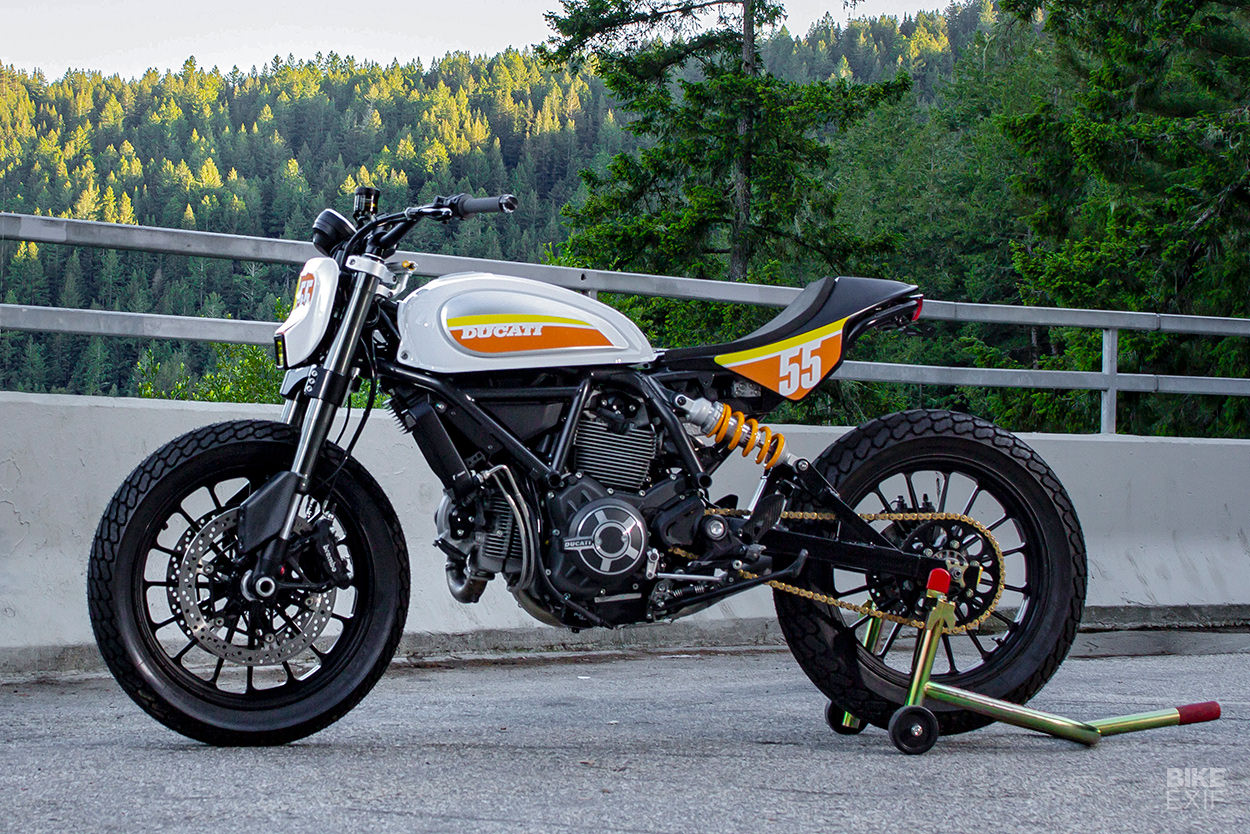
“I’ve been working on my 2016 Ducati Scrambler for about two years now,” Tom tells us, “with a simple project brief: What if Bologna made a factory Super Hooligan racer?”
“I finally finished the bike in time for the Quail Motorcycle Gathering last month in Monterrey, and I’m honored to say that I took home the Spirit of Scrambler award presented by the CEO of Ducati North America!”
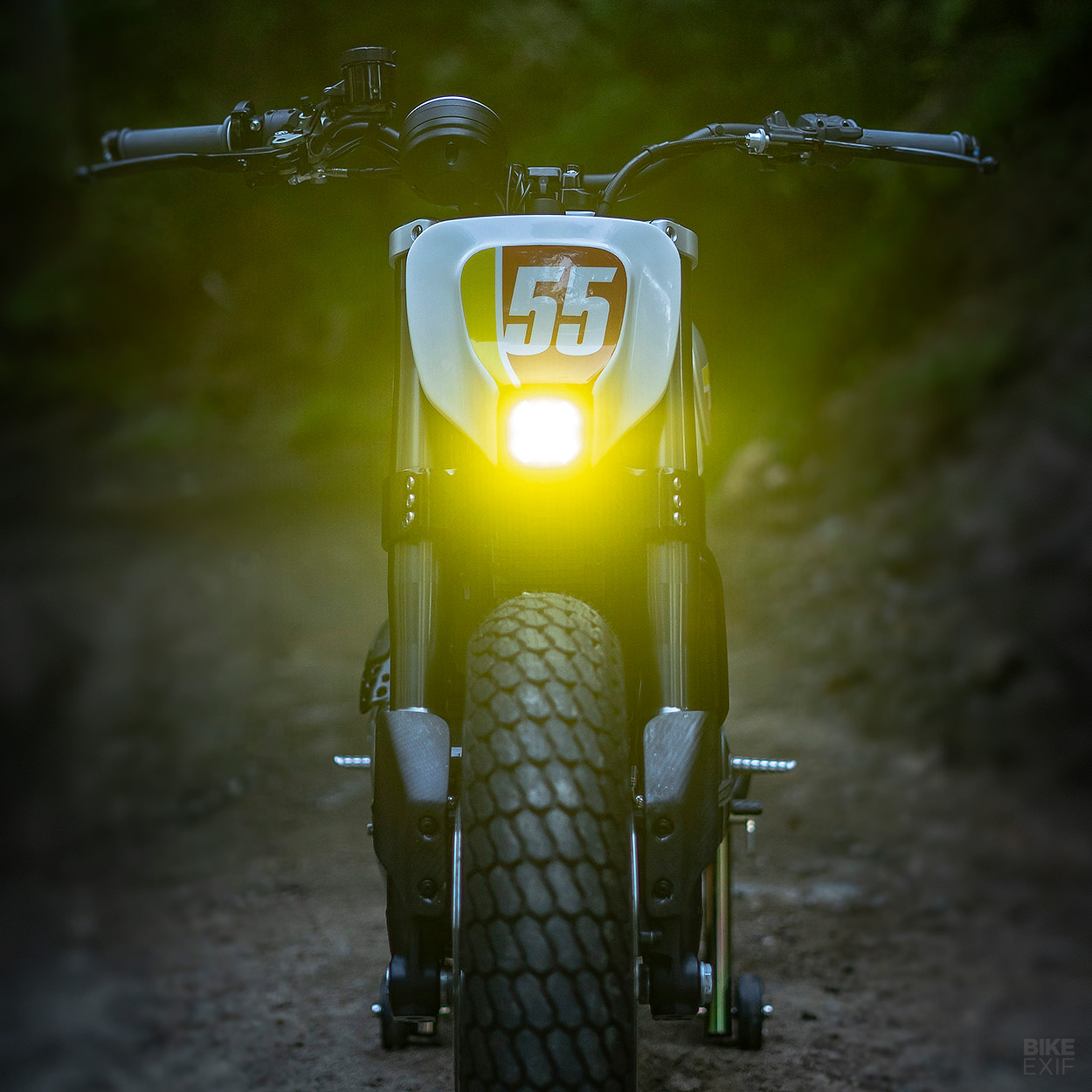
At a glance, Tom’s street tracker doesn’t look too far off the stock 2016 Ducati Scrambler. But if you know where to look, there’s a ton of good stuff going on. It’s just very stealthy.
“The greatest compliment I receive on the bike,” he says, “is when someone looks at it and says ‘What did you even do to it?’ But the truth is, there wasn’t a single part on this bike that wasn’t worked over, and I take great pride in the factory look and feel.”
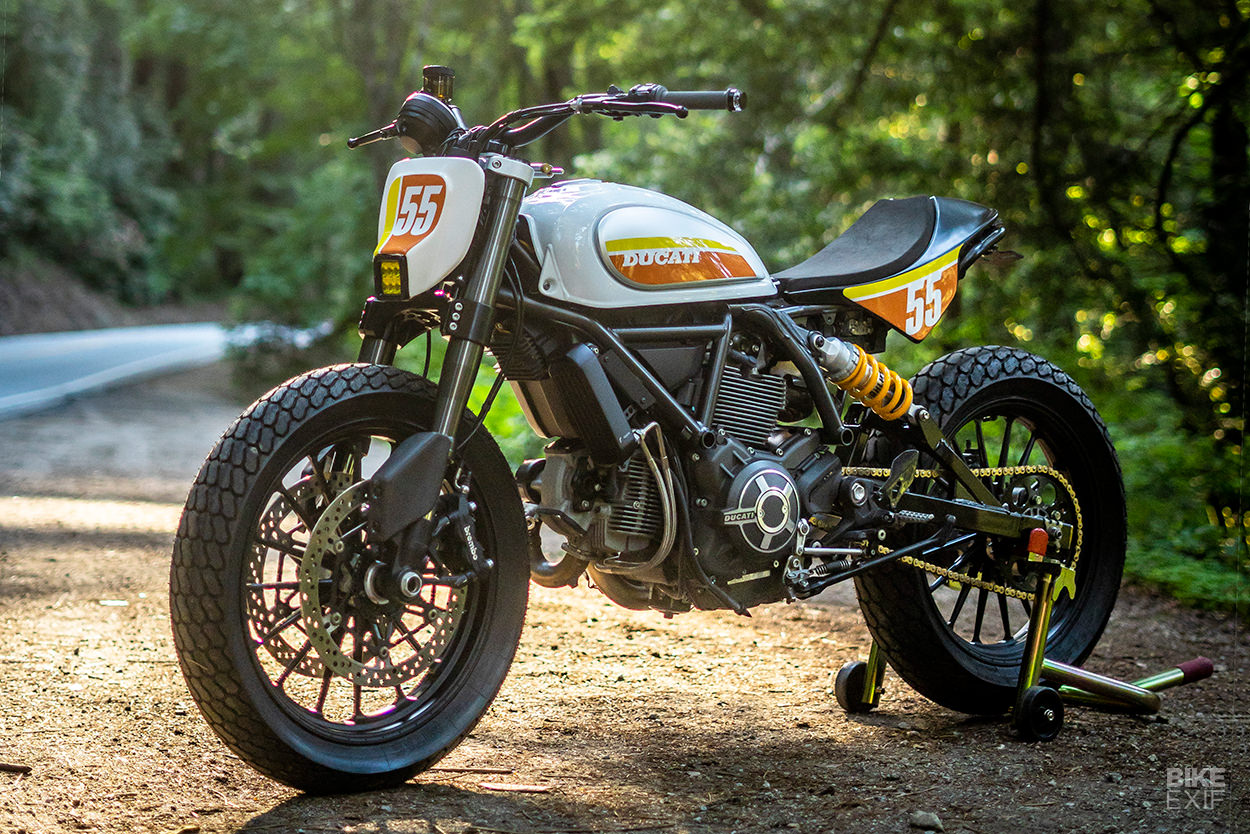
Part of that factory vibe is thanks to the Ducati’s new livery—which is remarkably on-brand. Tom kept the stock fuel tank, but had it painted in Alfa Romeo white, with fresh vinyl graphics on the tank’s aluminum side panels.
A bigger job was jacking the Scrambler up with new suspension. There’s a set of Showa upside-down forks up front, lifted from a Ducati Panigale. They’re held by a set of custom CNC-machined triple clamps, which also accommodate an Öhlins steering dampener.

The front brake setup features twin Brembo calipers, with the Panigale’s rotors. Tom’s also added a pair of carbon fiber fork protectors.
Out back is a modified Ducati 900 SS swingarm, hooked up to an Öhlins shock. The rear set foot controls are borrowed from a Ducati Monster 1100 Evo. And if you look closely, you’ll spot a few carbon fiber dress up bits—including engine covers that look vastly better than the stock plastic units.
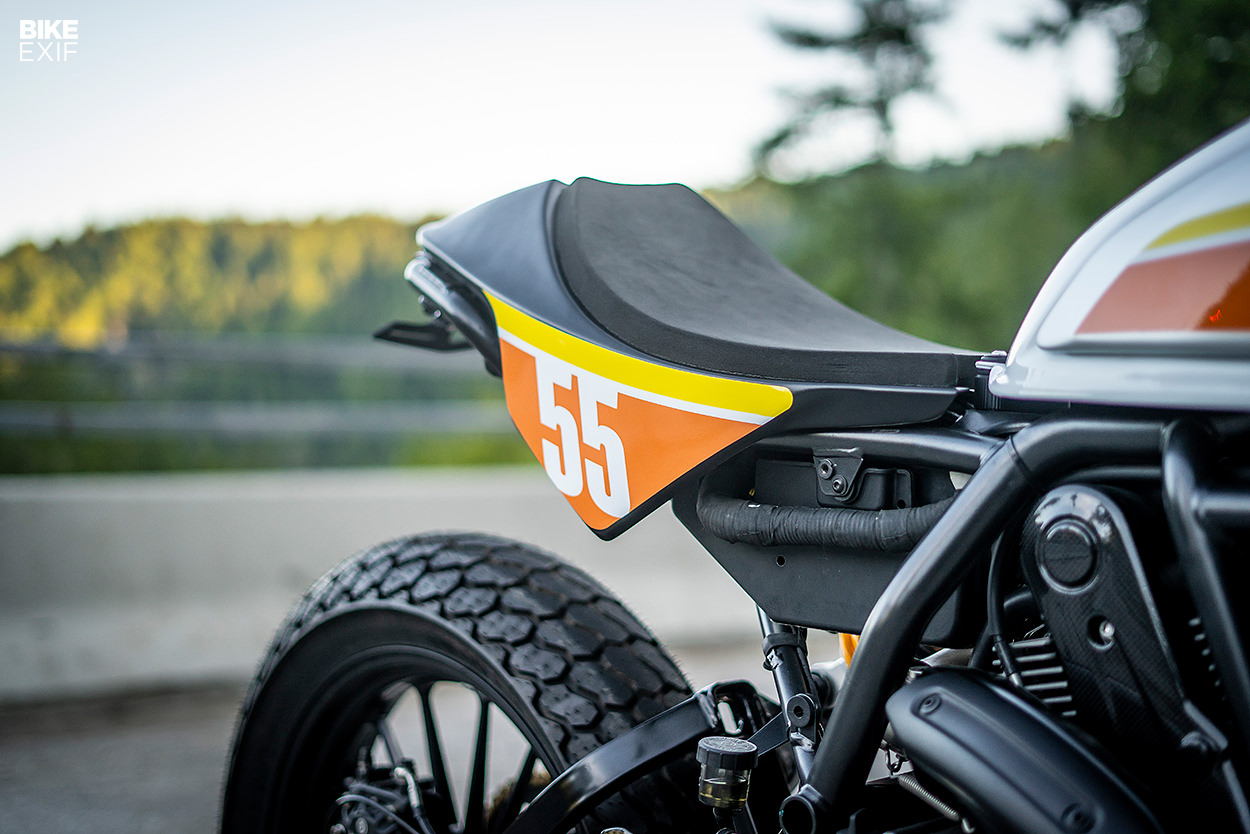
Getting the flat track stance just right also meant fitting style-appropriate 19” hoops. Tom opted for a set of Roland Sands Traction wheels with custom hubs, and DOT-approved dirt track tires from Mitas.
The flat track-style tail section is all custom, and reportedly took Tom 200 hours and four iterations to get right. It’s made from fiberglass, and is topped off with a bare bones racing foam seat pad.
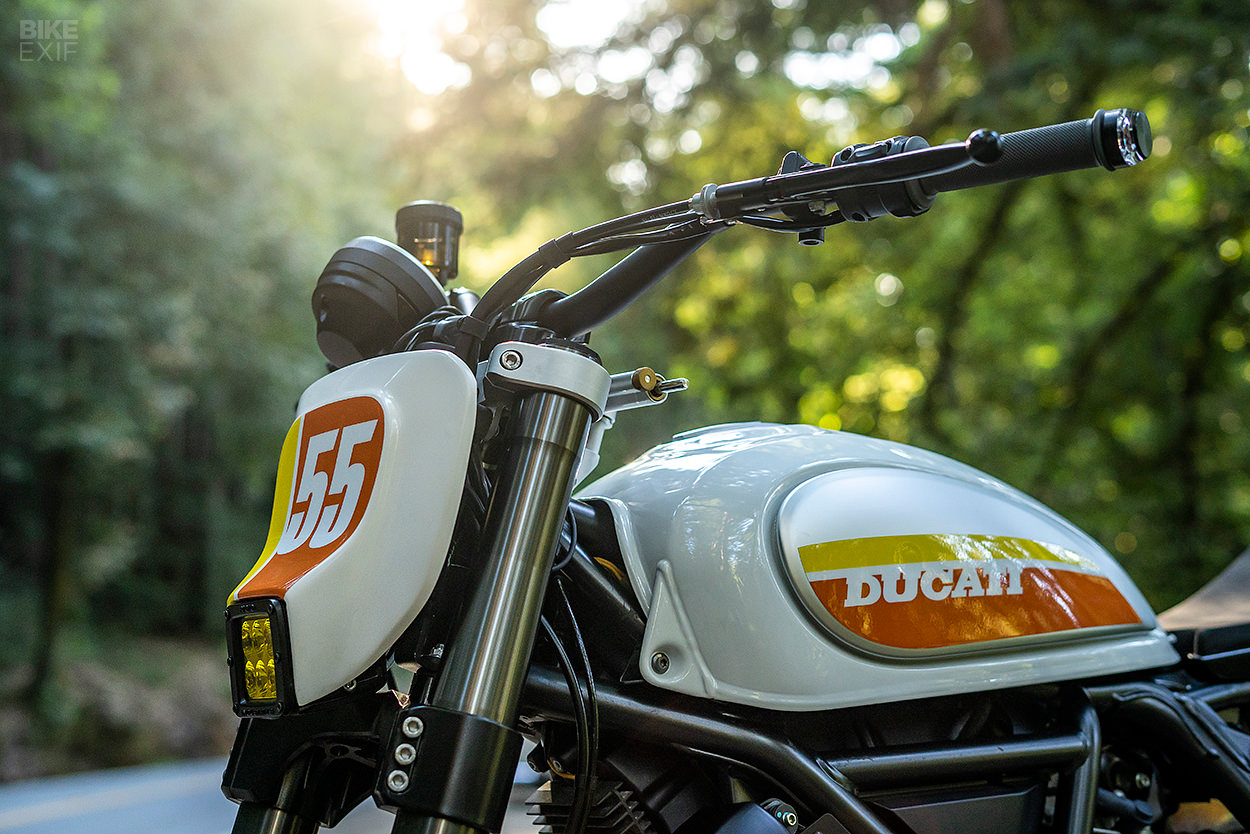
The body kit’s finished off with a custom-built fiberglass headlight nacelle from, fitted with an LED light from Rigid Industries. Tom had some help from Hotbodies Racing on the fiberglass parts.
The cockpit area’s a mix of OEM and new bits. The risers, bars and speedo are stock, but Tom’s installed Renthal grips, a Renthal brake control and Motogadget bar-end turn signals.

The exhaust silencer is custom made, and shaves 10 pounds off the overall weight. But more importantly, the Scrambler’s performance has been fine-tuned, too. Tom handed the bike to Factory Pro Tuning for a new fuel map and a dyno run.
The result is less about outright power and more about how that power is made; there’s a 10 percent increase in the mid range now. The stock Scrambler is peppy enough as it is—so this one should be a joy to hoon on.
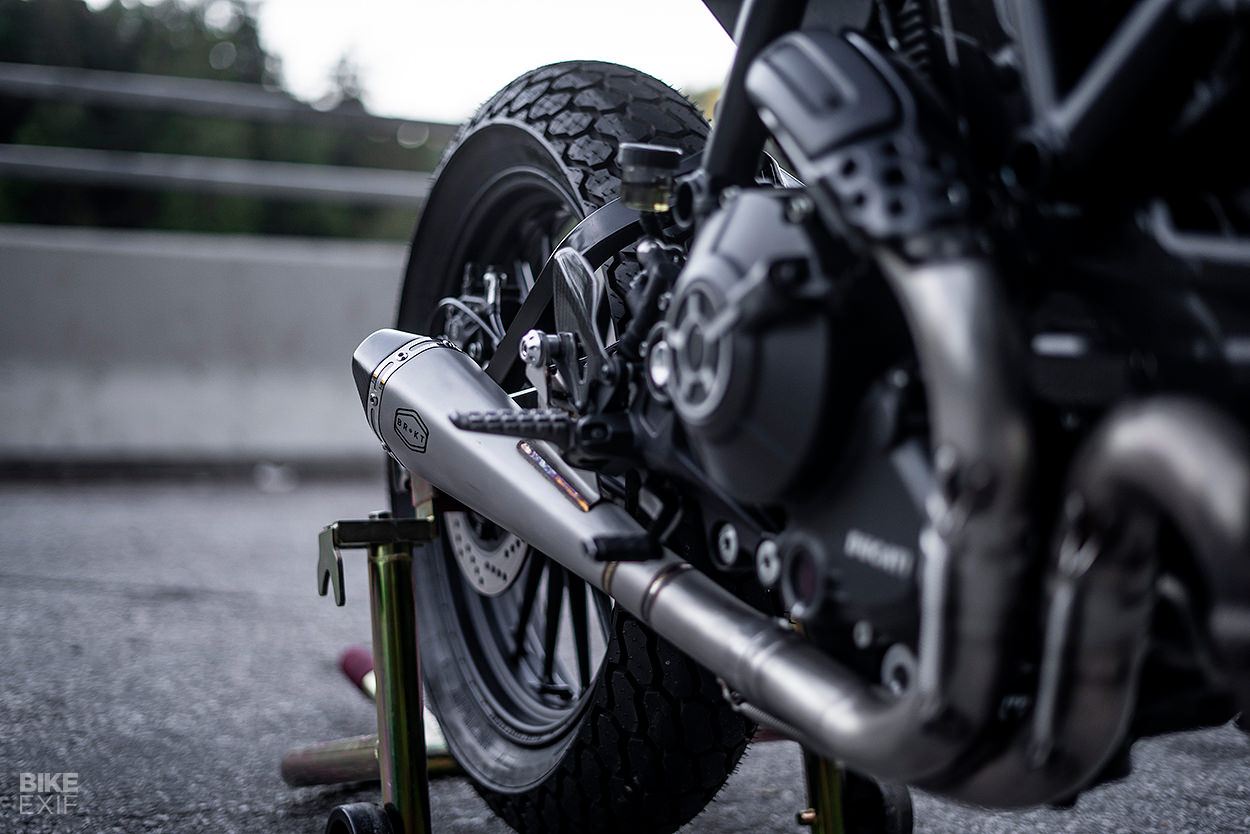
If Ducati ever did decide to make a factory Super Hooligan racer, they’d do well to take notes from Tom. But if they don’t, we have some good news—he’s planning to put some of these Scrambler parts into production, including the seat, headlight, exhaust, tail tidy, and graphics. And they’ll be sold via his new shop, BRKT (pronounced ‘bracket’) Moto.
Who else thinks it’s time for a little DIY?
BRKT Moto | Instagram | Images by David Coe and Leija Wellwood
